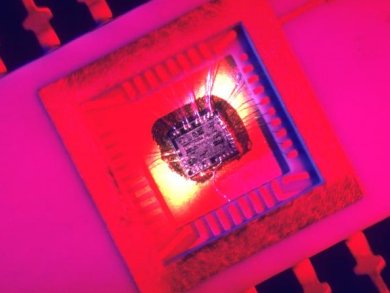Hard drives, computer chips, DVD players, and other electronic devices all contain ultrathin films of metals or semiconductors. Stress in these ultrathin films leads to crystal defects and eventually severe damage of the electronic device. The exact origin of stress has remained unclear.
Eric Mittemeijer, David Flötotto, and colleagues, Max Planck Institute for Intelligent Systems, Stuttgart, Germany, generated an ultrathin aluminium film, one layer at a time, measuring the stress within the nanofilm after each layer deposition. From the variation of stress with the film’s thickness, they concluded that the stress arises due to quantum confinement of the electrons: As the film is slightly thicker than the electrons’ wavelengths, the electrons can occupy only discrete energy states. The film expands or contracts to take on thicknesses that allow for a minimal electronic energy. However, this expansion or contraction often causes stress in the film, because the crystal lattice has to distort.
The discovery of how stress develops in ultrathin nanofilms could have multiple applications in material sciences, providing researchers with the essential knowledge to influence and design a film’s electrical, optical, and magnetic properties.
- Quantum Confinement Drives Macroscopic Stress Oscillations at the Initial Stage of Thin Film Growth,
D. Flötotto, Z. Wang, L. P. H. Jeurgens, E. J. Mittermeijer,
Phys. Rev. Lett. 2012, 109(4), 045501.
DOI: 10.1103/PhysRevLett.109.045501




